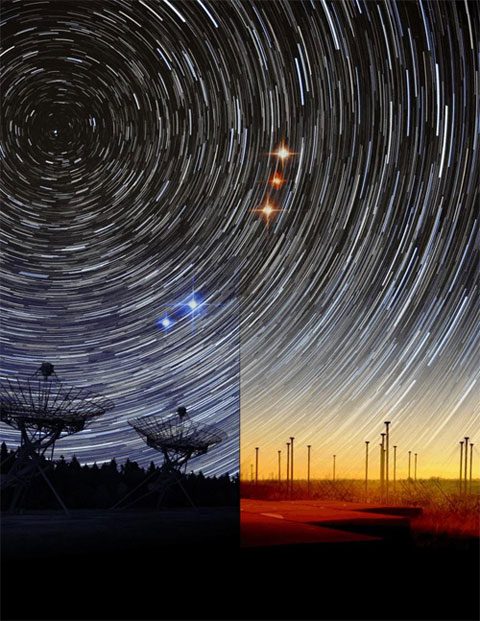Scientists have connected the two largest radio telescopes in the world to closely observe the mysterious “colors” of a phenomenon between galaxies known as fast radio bursts (FRBs).
FRBs are among the most powerful energy explosions in the universe, releasing more energy than the Sun generates in three days into bright flashes that last only a few milliseconds.

Scientists have used the two largest radio telescopes in the world and discovered the color of the explosion in a fraction of a millisecond.
Thousands of FRBs flash across the universe every day, but our naked eye cannot see them. FRBs only emit radiation in the radio wavelength, far beyond the red edge of the visible spectrum.
However, the radio spectrum does contain a miniature rainbow in its own right, with shorter radio wavelengths appearing blue to radio telescopes and longer wavelengths appearing slightly red.
Using the Low Frequency Array (LOFAR) and the Westerbork Synthesis Radio Telescope (two radio telescopes from different facilities in the Netherlands), researchers discovered a periodically repeating FRB designated 20180916B, which emits a series of bursts every 16 days or longer.
Astronomers reported that the Westerbork radio telescope detected a short, periodic fast radio burst in the high-frequency radio sky, blue, while the LOFAR telescope detected a low-frequency red burst from the same point several days later.
They concluded that FRB 20180916B is being generated by a magnetar. As the magnetar slowly rotates, its bright magnetic field may beam toward Earth every two weeks or so, creating the repeating FRB observed in this study.
This explanation is also consistent with 2020 FRB research, where scientists discovered another FRB associated with a known magnetar in the Milky Way, providing the first precise source for an FRB.




















































